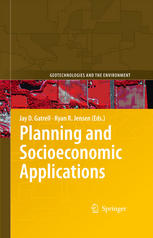

Most ebook files are in PDF format, so you can easily read them using various software such as Foxit Reader or directly on the Google Chrome browser.
Some ebook files are released by publishers in other formats such as .awz, .mobi, .epub, .fb2, etc. You may need to install specific software to read these formats on mobile/PC, such as Calibre.
Please read the tutorial at this link: https://ebookbell.com/faq
We offer FREE conversion to the popular formats you request; however, this may take some time. Therefore, right after payment, please email us, and we will try to provide the service as quickly as possible.
For some exceptional file formats or broken links (if any), please refrain from opening any disputes. Instead, email us first, and we will try to assist within a maximum of 6 hours.
EbookBell Team

4.0
66 reviewsThe book focuses on socio-demographics and the use of these data to support strategic planning initiatives associated with the spatial expansion of urban areas and economic development. It contains a conceptual discussion of the challenges, both methodological and practical, implementing GIS applications for assessing economic and planning activities in peripheral regions including developing countries.
The book examines how spatial clustering concepts, spatial models, and related visualization techniques (GIS) can be applied to the case of economic development in rural environments. It discusses methodological issues including data and analysis issues. It also examines the differential growth patterns of counties within city-systems of the Western United States from the date of county formation until the late 20th century, using an historical GIS and historical US Census data. The final chapter summarizes the collection and positions it within the context of the broader book series on geotechnologies.
The book is written by planning practitioners as well as university based researchers. It will provide scholars and professionals with a survey of the contemporary work in the field, and with insights into remaining questions, methodological debates, and technical complications of employing geotechnologies in the real world.